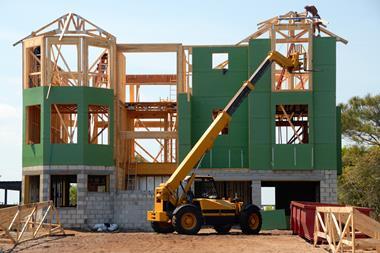Strathclyde Pension Fund, Scotland’s largest local authority pension fund, topped up its cash balances to prepare for any COVID-19-linked interruption in income from employers, according to its unaudited annual report.
The report indicates the top-up, which was a transfer from its investment balances, was for £100m (€84m).
The £20.9bn pension fund said the transfer was “to ensure ample cover for pensions payments in the event that income from employers is interrupted as a result of coronavirus precautions in the new financial year”.
It said it contributed to an “unusually high” cash balance of £195m as at 31 March 2020, the end of its financial year, alongside a contributions payment in respect of backdated equal pay settlements and a bulk transfer payment.
Strathclyde’s cash balance at the end of its 2019 financial year was £58.8m. By way of comparison, the cash balances of Lothian Pension Fund, the second largest local government pension scheme in Scotland, had group cash balances of £39m as at 31 March 2020.
Strathclyde’s total investment return for the year to 31 March 2020 was -3.5%, with most of the loss coming from equity portfolios (-6.3%).
There were sharp falls in some other portfolios – -20.4% in emerging market debt and -15.5% in multi-asset credit – although the pension fund said its non-equity investments “held up reasonably well”, with UK property returning 2.5%, global real estate 11% and global infrastructure 3.7%.
Although Strathclyde’s three and five-year annualised returns “comfortably” exceeded its benchmark, the pension fund highlighted that the three-year figure of 2.7% was less than the actuary’s long-term assumption of 3.5% per annum, and would therefore have a negative impact on the actuarial valuation to be carried out with a strike date of 31 March.
New investment structure implemented
Strathclyde has been pursuing a strategy of greater diversification over the past several years, and in its annual report said that during 2019/20 it had implemented an investment structure “consistent with” the new strategic target model it had agreed in 2018.
Called “Step 2”, the model involves a 20% target allocation to two “enhanced yield” buckets – one short-term and one long-term – plus a 52.5% allocation to equity, a 1.5% hedging/insurance allocation and a 6% credit allocation.
The pension fund said funding of a new private real estate debt mandate with ICG Longbow, and of three new segregated private corporate debt mandates with Barings, Alcentra and Partners Group commenced in the year under review, and would show up in the amount invested in the short-term enhanced yield bucket over the next two to three years.









No comments yet